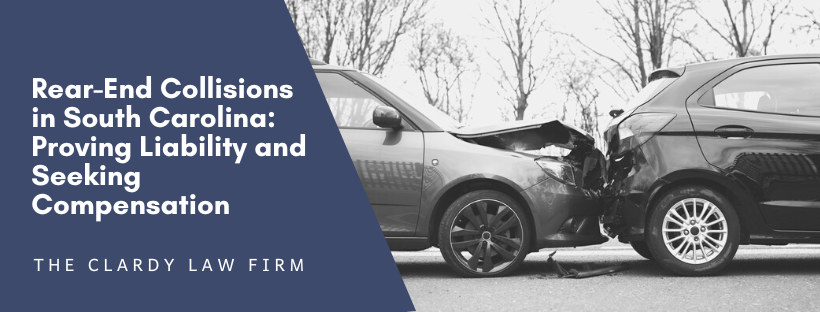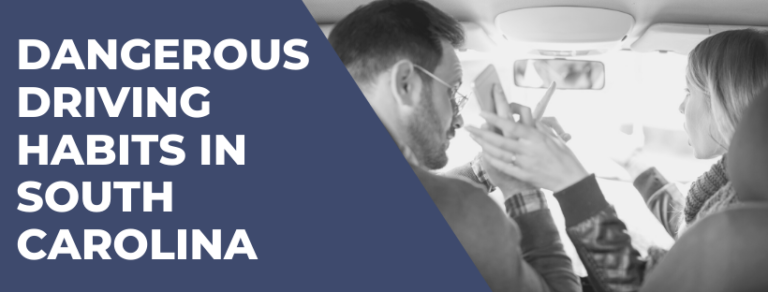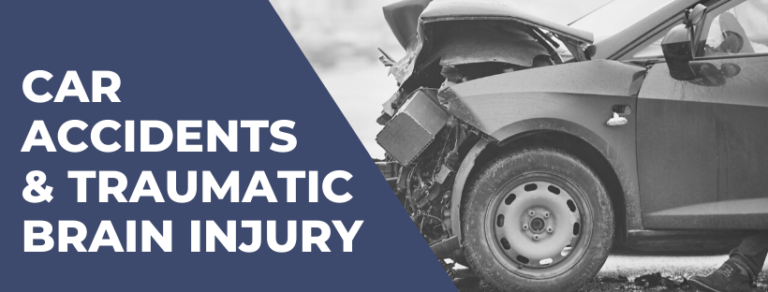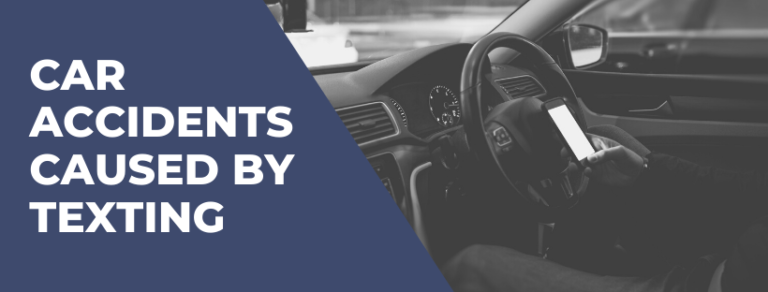In the bustling highways and roads of South Carolina, rear-end collisions have become an unfortunate reality for many motorists. These accidents often result in serious injuries and property damage, leaving victims grappling with physical, emotional, and financial challenges.
There are approximately 1.7 million rear-end collisions in the US every year. If you are involved in a rear-end collision in South Carolina, understanding how to prove liability and seek compensation is crucial. In this comprehensive guide, we’ll explore the nuances of rear-end collisions in the state, the injuries they can cause, and the steps you can take to win a rear-end collision case and secure the settlement you deserve.
The Anatomy of Rear-End Collisions in South Carolina
Rear-end collisions occur when one vehicle crashes into the back of another. These accidents can happen for various reasons, including distracted driving, speeding, tailgating, or sudden stops. In South Carolina, such accidents are unfortunately common due to the state’s high traffic volume and diverse road conditions.
Understanding Liability in Rear-End Collisions
South Carolina law often presumes that the rear driver is at fault in a rear-end collision. However, this presumption is not absolute, and liability may shift based on the circumstances of the accident. Factors such as sudden stops, brake light malfunctions, or other external influences could impact the determination of fault.
Proving Negligence in Rear-End Collisions
To secure a favorable outcome in a rear-end collision case, establishing negligence is crucial. Gathering evidence such as eyewitness accounts, traffic camera footage, and expert opinions can help demonstrate the negligent actions of the at-fault party. Additionally, documenting the extent of injuries and damages is vital for building a robust case.
What Causes Rear-End Collisions?
Rear-end collisions can occur due to various factors, and understanding these causes is essential for promoting road safety. Here are some common reasons behind rear-end collisions:
- Distracted driving: One of the leading causes of rear-end collisions is distracted driving. When drivers take their attention away from the road to text, talk on the phone, use GPS devices, or engage in other distractions, they may fail to notice slowing or stopped traffic ahead.
- Tailgating: Following too closely behind the vehicle in front, known as tailgating, reduces the reaction time a driver has to respond to sudden stops or slowdowns. If the lead vehicle brakes suddenly, the following vehicle may not have enough time to stop, resulting in a rear-end collision.
- Speeding: Driving at speeds higher than the posted limits or too fast for road conditions can contribute to rear-end collisions. Higher speeds reduce the time available for a driver to react to changes in traffic flow.
- Aggressive driving: Aggressive behaviors such as weaving in and out of traffic, improper lane changes, or aggressive tailgating increase the risk of rear-end collisions. Aggressive drivers may not anticipate traffic changes and may struggle to maintain safe distances.
- Weather conditions: Adverse weather conditions like rain, snow, or fog can affect visibility and road traction. Reduced visibility and slippery road surfaces make it challenging for drivers to respond quickly to changes in traffic, leading to an increased risk of rear-end collisions.
- Sudden stops: A vehicle making an unexpected or sudden stop, whether due to a traffic signal, a turning vehicle, or an obstacle in the road, can catch the following driver off guard and result in a rear-end collision.
- Vehicle defects: Mechanical failures or defects in a vehicle’s braking system can lead to braking issues, making it difficult for the driver to stop in time to avoid a collision.
- Fatigue or drowsy driving: Tired or drowsy drivers may have slower reaction times and impaired judgment, increasing the likelihood of rear-end collisions.
- Inexperienced drivers: Inexperienced or novice drivers may struggle with judging distances, maintaining appropriate speeds, and reacting to changing traffic conditions, making them more prone to rear-end collisions.
- Intoxicated driving: Driving under the influence of alcohol or drugs impairs a driver’s ability to react and make sound judgments, significantly increasing the risk of rear-end collisions.
Is It Always the Driver of the Car That Rear-Ended the Vehicle in Front That Is Held Liable?
In many cases, the driver who rear-ends another vehicle is considered at fault, and this is often referred to as a “rear-end collision presumption.” The rationale behind this presumption is that, in a typical scenario, the driver following from behind is expected to maintain a safe following distance and be prepared to stop or slow down if the lead vehicle does so. However, it’s important to note that this presumption is not absolute, and there are situations where the lead driver or other factors may contribute to the accident.
Here are some situations where the rear driver may not be automatically at fault:
- Sudden stops by the lead vehicle: If the lead vehicle makes a sudden and unexpected stop without a valid reason, the rear driver might not have had sufficient time to react, and fault may be shared or assigned to the lead driver.
- Faulty brake lights: If the lead vehicle has malfunctioning brake lights and fails to signal that it is slowing down or stopping, the rear driver may not be adequately warned and could argue that the lack of proper signaling contributed to the collision.
- Cut-off or aggressive maneuvers by the lead driver: If the lead driver engages in aggressive or erratic driving behavior, such as abrupt lane changes or cutting off the rear driver, it may impact the assignment of fault.
- External factors: Road hazards, debris, or another driver’s actions could contribute to a rear-end collision. In such cases, fault may be shared among multiple parties or assigned to a third party.
- Multiple vehicle collisions: In a chain reaction involving multiple vehicles, determining fault can be complex. It may involve analyzing the actions of all drivers involved and any contributing factors.
Ultimately, determining fault in a rear-end collision depends on the specific circumstances of the accident. Insurance companies, law enforcement, and courts will consider factors like evidence, witness statements, traffic laws, and the actions of both drivers involved.
In some situations, both drivers may be held partially liable for a rear-end collision. Shared liability, also known as comparative or contributory negligence, is a legal concept that acknowledges that more than one party may bear responsibility for an accident. In jurisdictions that follow a comparative negligence system, each party may be assigned a percentage of fault, and their compensation may be reduced accordingly. In contributory negligence jurisdictions, if a party is found to be even slightly at fault, they may be barred from recovering damages.
If you’ve been involved in a rear-end collision where liability is disputed or shared, consulting with a car accident attorney can provide valuable guidance on navigating the legal complexities and pursuing a fair resolution.
Related: Who Is Responsible in a Multi-Car Accident?
The Importance of Seeking Medical Attention
Rear-end collisions often result in various injuries, ranging from minor whiplash to more severe conditions like spinal injuries and concussions. Seeking prompt medical attention is not only crucial for your well-being but also plays a pivotal role in establishing a direct link between the accident and your injuries. Medical records and expert testimonies can significantly strengthen your case when pursuing compensation.
Common Injuries Caused by Rear-End Collisions
Rear-end collisions can result in a variety of injuries, ranging from mild to severe. The most common injuries associated with these types of accidents include:
- Whiplash: Whiplash is a soft tissue injury that occurs when the head is suddenly jerked forward and then backward, causing strain on the neck muscles and ligaments. It is one of the most common injuries in rear-end collisions.
- Neck injuries: Besides whiplash, rear-end collisions can cause other neck injuries, including strains, sprains, and more severe conditions like herniated discs.
- Back injuries: The force of impact in a rear-end collision can lead to various back injuries, such as sprains, strains, and herniated discs. These injuries may cause pain and limit mobility.
- Head injuries: Impact from a rear-end collision can cause the head to strike against the headrest, steering wheel, or other surfaces, resulting in head injuries. These injuries may range from concussions to more severe traumatic brain injuries (TBIs).
- Facial injuries: Facial injuries may occur if airbags deploy or if the driver or passengers strike hard surfaces within the vehicle during the collision. This can result in bruising, lacerations, or fractures.
- Chest and rib Injuries: The impact of a rear-end collision can cause chest injuries, including contusions, bruising, or fractures of the ribs. Airbags may also contribute to chest injuries.
- Knee and leg Injuries: The lower extremities may be injured if the legs are forcefully pushed into the dashboard, seat, or other structures within the vehicle. Fractures, dislocations, or soft tissue injuries can occur.
- Psychological injuries: Emotional distress, anxiety, and post-traumatic stress disorder (PTSD) can result from the psychological impact of a rear-end collision. Witnessing or experiencing a traumatic event can have lasting effects on mental health.
- Internal injuries: The force of impact can cause internal injuries, such as damage to organs or internal bleeding. These injuries may not be immediately apparent and may require medical attention.
- Sprains and strains: Soft tissue injuries, including sprains and strains in various parts of the body, are common in rear-end collisions. Muscles, tendons, and ligaments can be stretched or torn upon impact.
It’s crucial for individuals involved in a rear-end collision to seek prompt medical attention, even if injuries seem minor initially. Some injuries may have delayed symptoms, and early detection and treatment can significantly improve outcomes. Additionally, documenting injuries through medical records is essential when pursuing a personal injury claim or seeking compensation for damages.
Related: Signs of Delayed Injury after a Car Accident
What Compensation Can You Seek for a Rear-End Collision in South Carolina?
In South Carolina, if you’ve been injured in a rear-end collision or any other type of accident, you may be eligible to recover various types of compensation. The specific compensation you can pursue will depend on the nature and extent of your injuries and the circumstances surrounding the accident. Here are common types of compensation that may be available:
- Medical expenses: You can seek compensation for all reasonable and necessary medical expenses related to the treatment of your injuries. This may include hospital bills, surgeries, medications, physical therapy, and other healthcare costs.
- Lost wages: If your injuries prevent you from working and result in lost income, you may be entitled to compensation for your past and future lost wages. This can include salary, wages, bonuses, and other employment-related benefits.
- Pain and suffering: Compensation for pain and suffering is intended to address the physical and emotional distress you’ve experienced due to the injuries. This type of compensation is more subjective and may be influenced by the severity and impact of your injuries on your daily life.
- Property damage: If your vehicle or other personal property was damaged in the collision, you can seek compensation for the cost of repairs or the fair market value of the property.
- Permanent disability or disfigurement: In cases where the injuries result in permanent disability or disfigurement, you may be entitled to additional compensation to account for the long-term impact on your life.
- Loss of consortium: If the injuries have affected your relationship with a spouse, you may be eligible for compensation for the loss of consortium, which includes the loss of companionship, support, and intimacy.
- Wrongful death damages: In the tragic event that a rear-end collision results in a fatality, the surviving family members may pursue wrongful death damages, which can include funeral expenses, loss of financial support, and emotional distress.
- Punitive damages: In cases of extreme negligence or intentional misconduct, punitive damages may be awarded to punish the at-fault party and deter similar behavior. However, punitive damages are relatively rare and require a higher standard of proof.
When navigating the process of seeking compensation, it’s advisable to consult with a personal injury attorney in South Carolina. An attorney can help assess the specific details of your case, gather evidence, negotiate with insurance companies, and, if necessary, represent you in court to maximize your chances of receiving fair and just compensation for your injuries.
The Role of a Car Accident Attorney in South Carolina
The Knowledge and Experience of a Car Accident Lawyer
Navigating the legal complexities of a rear-end collision case in South Carolina can be challenging, especially when dealing with insurance companies and opposing parties. Hiring an experienced car accident attorney in South Carolina is essential to ensure your rights are protected and you receive the compensation you deserve.
Pursuing Compensation for Rear-End Collision Injuries
A skilled car accident lawyer can help you explore various avenues for compensation, including medical expenses, lost wages, property damage, and pain and suffering. Negotiating with insurance companies and, if necessary, litigating in court are tasks best handled by a legal professional in personal injury cases.
Finding the Right Car Accident Attorney in South Carolina
Qualities to Look For in a Car Accident Lawyer
When selecting a car accident attorney in South Carolina, consider factors such as experience, a track record of success, and client testimonials. Look for lawyers in personal injury cases and have a deep understanding of South Carolina’s specific laws governing rear-end collisions.
Clardy Law Car Accident Attorneys, Greenville, SC
If your rear-end collision occurred in Greenville, seeking the services of a local car accident attorney in Greenville, SC, is advantageous. Our local attorneys are familiar with the intricacies of the legal system, local courts, and the unique aspects of Greenville’s roadways.
Rear-end collisions in South Carolina demand a strategic and informed approach to ensure fair compensation for the victims. Each step is critical in building a strong case, from understanding liability to seeking medical attention and hiring the right car accident attorney.
By utilizing a qualified car accident lawyer from The Clardy Law Firm in Greenville, SC, you can navigate the legal landscape with confidence and increase your chances of a successful settlement for a rear-end collision in South Carolina.





